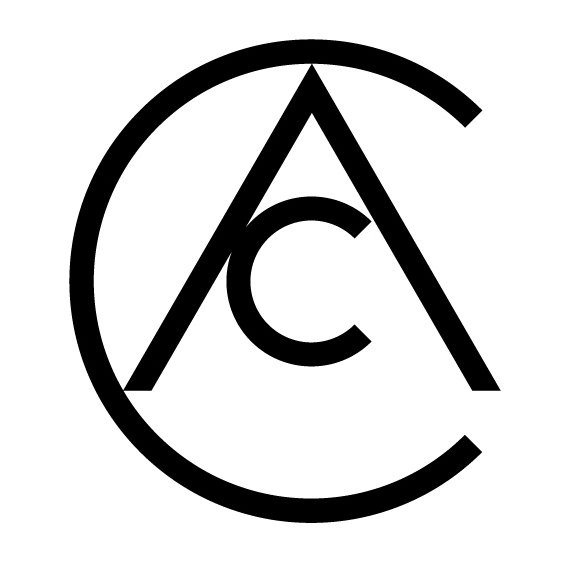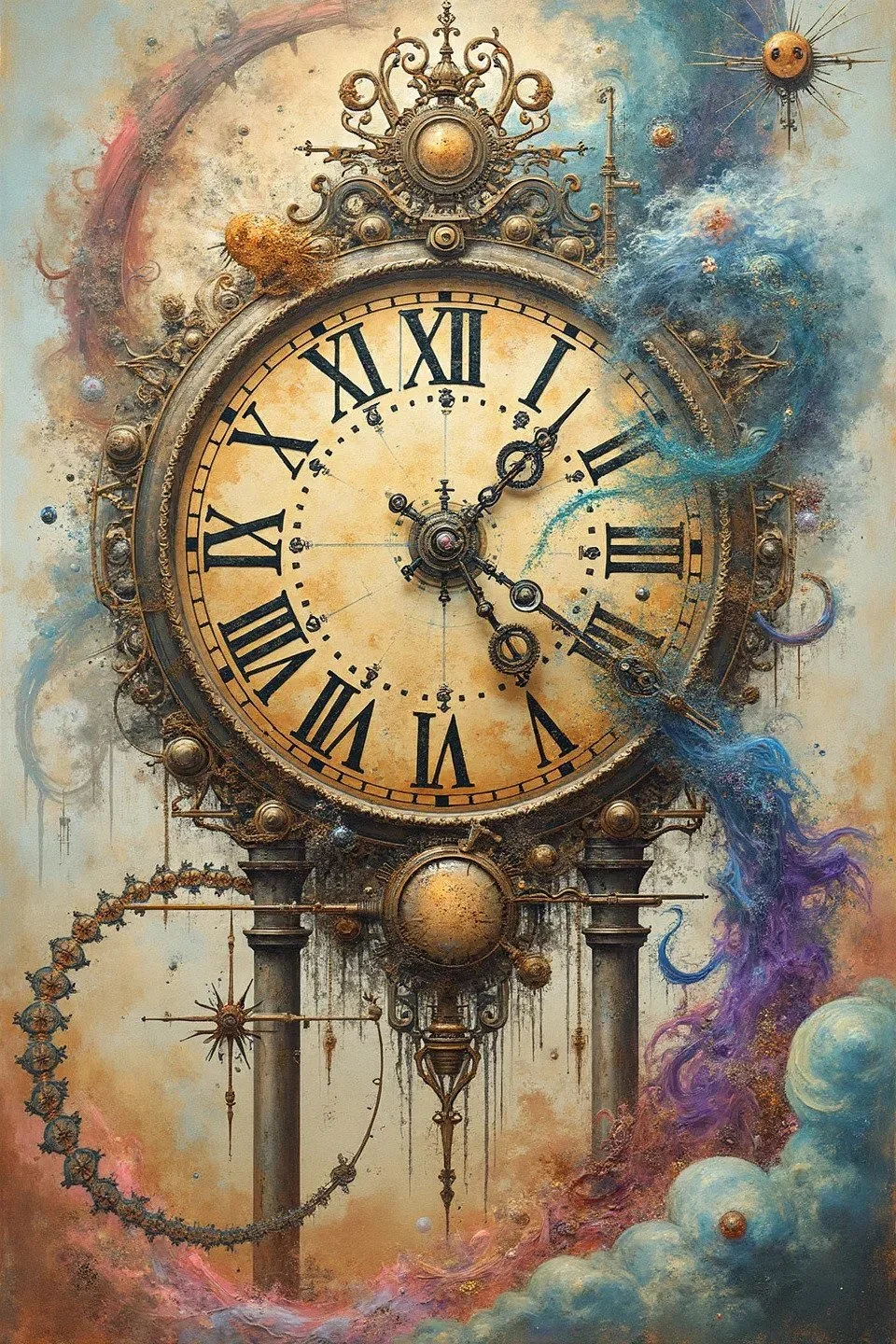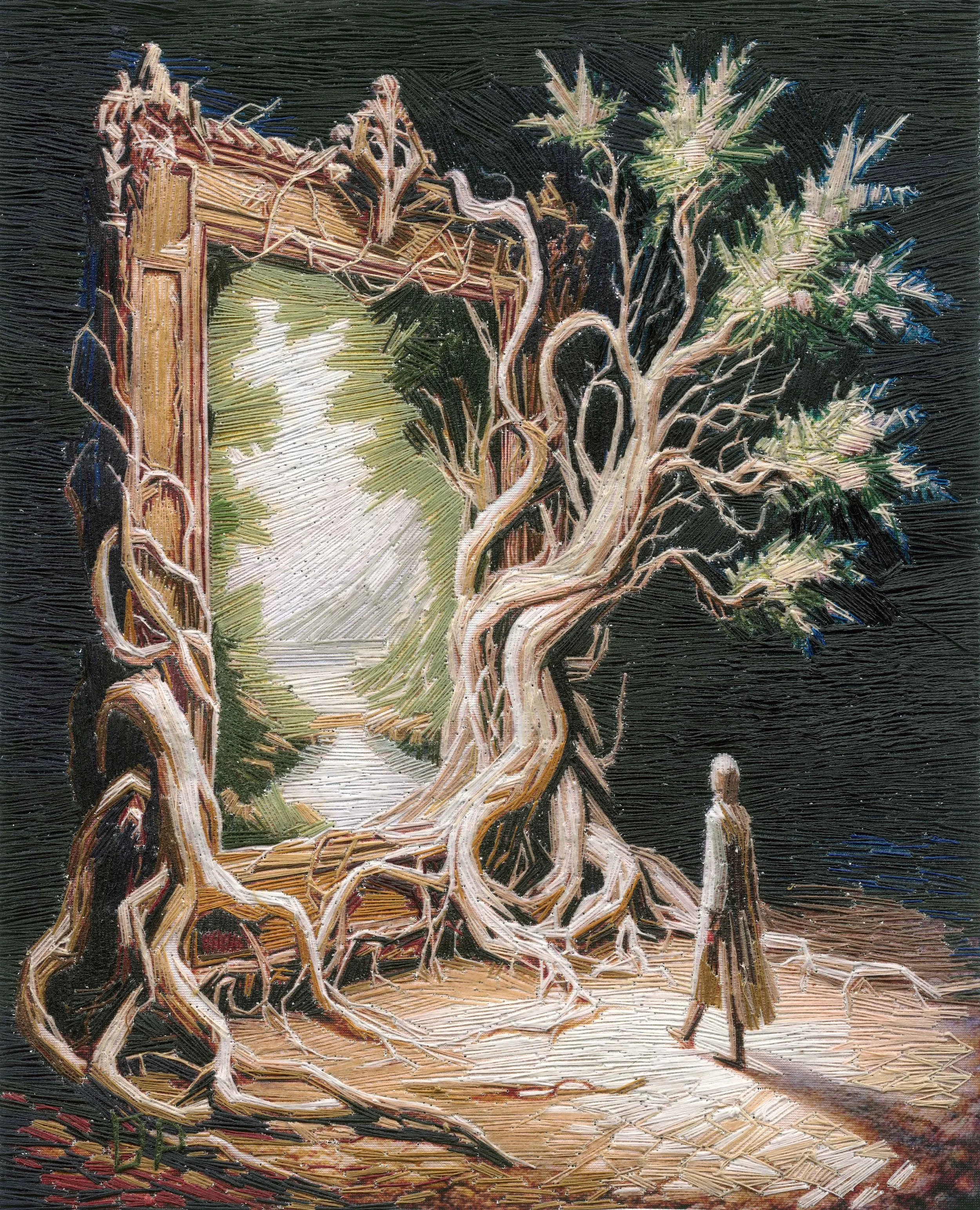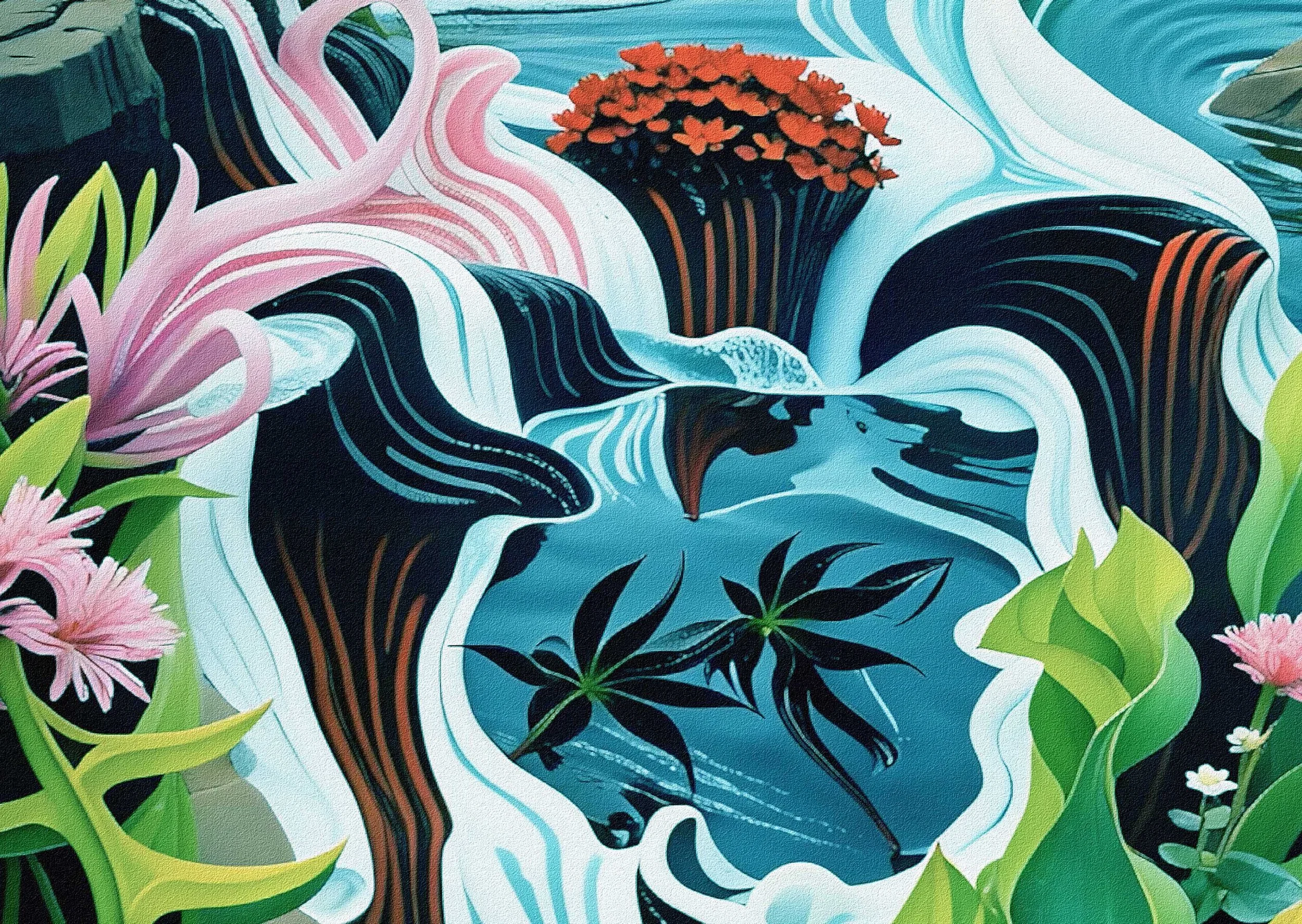My path has been quite unexpected. I studied literature and built a career in event planning, later working independently with decorative objects. Surrounded by beauty and curated spaces, I felt a growing pull toward artistic expression. Last year, I finally decided to follow that calling fully, and it opened an entirely new chapter in my life.
All in Interview
Interview with Louise Manzon
In my work, the space between figuration and abstraction allows me to move away from literal representation and focus on what makes a form feel alive. Rather than describing anatomy, I build forms according to an internal logic — guided by balance, tension, rhythm, and movement. This gives me the freedom to explore presence as something physical and perceptual, not symbolic or narrative.
Interview with Karima Al-shomely
I achieve a balance between documentation and abstraction by approaching visual ethnography as an interpretive process rather than a mere direct of reality. It helps me uncover what already exists as a foundation for the documentation phase, which forms the knowledge base of the work. In this phase, I am committed to prolonged observation, immersion in the cultural context, and the collection of images and visual materials as evidence of lived experience, while respecting the privacy of the place and the people and their symbolic meanings.
Interview with Charlotte Baqai
My creative process is absolutely an excavation of my internal landscape on all layers, mental, emotional, physical and spiritual in that given moment and to use the archaeology reference, some things are easier to excavate than others depending on how many layers it is buried beneath. This is reflected in my work, the deeper the emotion, the memory or experience, the more layers of paint, the more activity and energy is required to achieve the release.
Interview with Iyad Almosawi
Iyad Almosawi is a versatile and talented artist with award-winning works across various genres. He masterfully blends technique and vision in his paintings, sculptures, murals and installations, exploring inner energies and emotions. His murals, which bring color and life to public spaces reflect his love for nature. Through his art, he transforms spaces, making them accessible and inviting for people to admire and engage with.
Interview with Petra Mattes
Most of my chosen canvases and surfaces are conscious decisions. It begins with the size of the canvas and then the structure. This decision is very important. The painting process is a constant making of choices which influence, enormously, the result. Sometimes I struggle with the surface and ask it what it wants. To work against the surface is contradictory. For example, I chose a very plain canvas surface for the painting -love- , as I wanted the black color to drop down on it, to express the fluid existence of love. According to the philosopher Heraclitus, “Everything flows…”
Interview with Yasmina Barbet
Yasmina Barbet, is a French photographer trained at the IED in Rome, developed in Paris a visual approach enriched by drawing, art history, and image processing. Upon returning to Rome, she created a personal online photographic archive in 2008.
Interview with Karel Vereycken
Born in 1957 in Antwerp, Belgium, Karel Vereycken graduated from the Institut Saint-Luc in Brussels and trained in engraving at the Académie Royale des Beaux-Arts, where he obtained a certificate of passage « with distinction. ». Today, in France, he concentrates on writing about art history, producing audio guides and of course watercolors and engravings. In France, as a member of the Fédération nationale de l’estampe, he confirmed his technical mastery at Atelier63 and continued to perfect his skills in the Montreuil workshop of Danish engraver Bo Halbirk.
Interview with Fari Ali
Painting to me has been a spiritual journey for over 50 years. I have to my credit more than 300 paintings of oils on canvas. My genre of art is photo-realism, expressionism and hyper-realism. I am particularly passionate about preserving Nature and my intention and purpose is to bring awareness to the beauty of the environment we live in so that we as human beings take action to preserve and appreciate all aspects of it: Through portraits of people, birds and animals - I bring out the true essence of their personalities and immortalize their moments.
Interview with Frasquito Raymond-Gil Urquijo
Frasquito Raymond-Gil Urquijo, born in Jerez de la Frontera, is a grotesque, tragicomic, and unapologetically absurd alter ego of his creator—a surreal mix of Andalusian roots, cosmopolitan wanderlust, and obsessive curiosity. His art is naïve, conceptual, and intentionally imperfect: flat perspectives, rudimentary techniques, and unpredictable outcomes give each piece kitsch, personality, and grotesque charm. Inspired by eccentric people, peculiar anecdotes, and the absurdities of life—from Holy Week processions with freshmen balanced on doors, to goat-bleating classmates, to the chaos of global cities.
Interview with Ursa Schoepper
The beauty of experimental art lies in the fact that the value of an idea cannot be mathematically calculated. Digital resources operate according to the code of "either/or." However, playing with an artistic idea is not computable. Creativity and innovation follow a both/and principle. The photographic artist as constructor is a creator, not a draftsman, not a graphic artist, not a copyist. As a phantom of light, photography becomes the bearers for an artistic vision. Image skin, artificial skin, forms the blueprint for another possibility.
Interview with David Poyant
David Poyant is a contemporary embroidery artist whose work transforms the traditional craft of needlework into a powerful form of visual storytelling. Entirely hand-sewn, his pieces merge fine-art composition with the intimacy of textiles, creating richly textured worlds one stitch at a time. Beginning his artistic life later in adulthood, Poyant brings to his practice a deep sense of reinvention, memory, and lived experience. His decades as a cobbler and craftsman inform the patience, precision, and tactile sensitivity that define his work today.
Interview with Lon Levin
My work pokes at that uneasy space between structure and entropy — what I like to call “controlled chaos,” because frankly, that’s what life looks like when you take the training wheels off. Every piece is its own little ecosystem, humming along with its own rules, moods, and mischief. I’m fascinated by how order crawls out of disorder, how meaning sneaks in through the cracks when forms, colors, and movements collide like they’ve had too much coffee.
Interview with Margaretha Gubernale
The figures allude to the practice of spirituality, to love of nature and humanity. Dialogue with God expands thought and the senses. The strands of light in my paintings symbolize forces, for example, the sun with its warmth and growth power, and the moon with its effect on water, especially on the sea with its ebb and flow, and on births, since humans are largely composed of water.
Interview with Tina Mader
Tina Corrales-Mader is an American artist born and raised in Los Angeles, California.
She began her love of visual arts at a very young age mesmerized by Mexican folk art all around her. Growing up, Tina quickly recognized that colors, shapes, forms, music, and creativity is such a basic necessity and she needed to embrace it in any form.
A Space Oddity: In Conversation with Artist Will Wilford
In Will Wilford’s ‘The 11th Hour’, the artist’s exploration of ‘human absence’ – a theme that remains a source of constant exploration – is wholly realised. Long, tapered tree trunks eerily pierce the horizontality of the compositional space. Wilford beautifully renders the distinctive shapes and lines of a palm tree’s trunk in his subtle personification of their non-human form.
Interview with Aleksandra Ciążyńska
Aleksandra Ciążyńska is an artist who knew from a young age that art would be more than just a hobby for her. She was born in 1987 in Poland. Although she is an economist by profession, she found her true path in painting, which she sees as a way to communicate without words. She honed her skills under the tutelage of Professor Paweł Lewandowski-Palle, achieving success in national and international competitions.
Interview with Natalia Jezova
I see my art as a living conversation, enriched by diverse readings. The symbolic layers I employ function like a palimpsest: allowing erasure, rewriting, and re-vision. In each context, the work may evoke different myths, memories, or modes of seeing, and this variability is part of its vitality. I trust in the resilience of images to resonate across boundaries, and in the unpredictable dialogue between viewer, culture, and history that keeps the work alive and ever-evolving.
Interview with Gaya Chandrasekaran
Growing up in Chennai, I was surrounded by rhythm — not just of music or language, but of rituals, festivals, colours, and textures. It’s a city where the ancient coexists effortlessly with the contemporary, and that duality continues to influence my work. The vivid colours of temple architecture, the meditative geometry of kolam designs and the undulating sound of Carnatic music, found their way into my subconscious and now echo in my paintings.
Interview with Deborah Barr
Art is the most profound expression of the human spirit. I am exploring the psychological disjunction in our contemporary life caused by its fast pace and rapid changes. The youth of today have too much information, they struggle to keep their personal and/or cultural identity and try to make sense of reality. Their world has become filtered. The Iris suggests natures beauty, in it’s original form and is a symbol for hope.




















